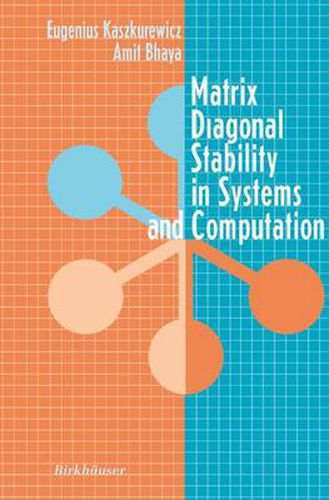Readings Newsletter
Become a Readings Member to make your shopping experience even easier.
Sign in or sign up for free!
You’re not far away from qualifying for FREE standard shipping within Australia
You’ve qualified for FREE standard shipping within Australia
The cart is loading…






This title is printed to order. This book may have been self-published. If so, we cannot guarantee the quality of the content. In the main most books will have gone through the editing process however some may not. We therefore suggest that you be aware of this before ordering this book. If in doubt check either the author or publisher’s details as we are unable to accept any returns unless they are faulty. Please contact us if you have any questions.
This monograph presents a collection of results, observations, and examples related to dynamical systems described by linear and nonlinear ordinary differential and difference equations. In particular, dynamical systems that are susceptible to analysis by the Liapunov approach are considered. The naive observation that certain diagonal-type Liapunov functions are ubiquitous in the literature attracted the attention of the authors and led to some natural questions. Why does this happen so often? What are the spe cial virtues of these functions in this context? Do they occur so frequently merely because they belong to the simplest class of Liapunov functions and are thus more convenient, or are there any more specific reasons? This monograph constitutes the authors’ synthesis of the work on this subject that has been jointly developed by them, among others, producing and compiling results, properties, and examples for many years, aiming to answer these questions and also to formalize some of the folklore or cul ture that has grown around diagonal stability and diagonal-type Liapunov functions. A natural answer to these questions would be that the use of diagonal type Liapunov functions is frequent because of their simplicity within the class of all possible Liapunov functions. This monograph shows that, although this obvious interpretation is often adequate, there are many in stances in which the Liapunov approach is best taken advantage of using diagonal-type Liapunov functions. In fact, they yield necessary and suffi cient stability conditions for some classes of nonlinear dynamical systems.
$9.00 standard shipping within Australia
FREE standard shipping within Australia for orders over $100.00
Express & International shipping calculated at checkout
This title is printed to order. This book may have been self-published. If so, we cannot guarantee the quality of the content. In the main most books will have gone through the editing process however some may not. We therefore suggest that you be aware of this before ordering this book. If in doubt check either the author or publisher’s details as we are unable to accept any returns unless they are faulty. Please contact us if you have any questions.
This monograph presents a collection of results, observations, and examples related to dynamical systems described by linear and nonlinear ordinary differential and difference equations. In particular, dynamical systems that are susceptible to analysis by the Liapunov approach are considered. The naive observation that certain diagonal-type Liapunov functions are ubiquitous in the literature attracted the attention of the authors and led to some natural questions. Why does this happen so often? What are the spe cial virtues of these functions in this context? Do they occur so frequently merely because they belong to the simplest class of Liapunov functions and are thus more convenient, or are there any more specific reasons? This monograph constitutes the authors’ synthesis of the work on this subject that has been jointly developed by them, among others, producing and compiling results, properties, and examples for many years, aiming to answer these questions and also to formalize some of the folklore or cul ture that has grown around diagonal stability and diagonal-type Liapunov functions. A natural answer to these questions would be that the use of diagonal type Liapunov functions is frequent because of their simplicity within the class of all possible Liapunov functions. This monograph shows that, although this obvious interpretation is often adequate, there are many in stances in which the Liapunov approach is best taken advantage of using diagonal-type Liapunov functions. In fact, they yield necessary and suffi cient stability conditions for some classes of nonlinear dynamical systems.